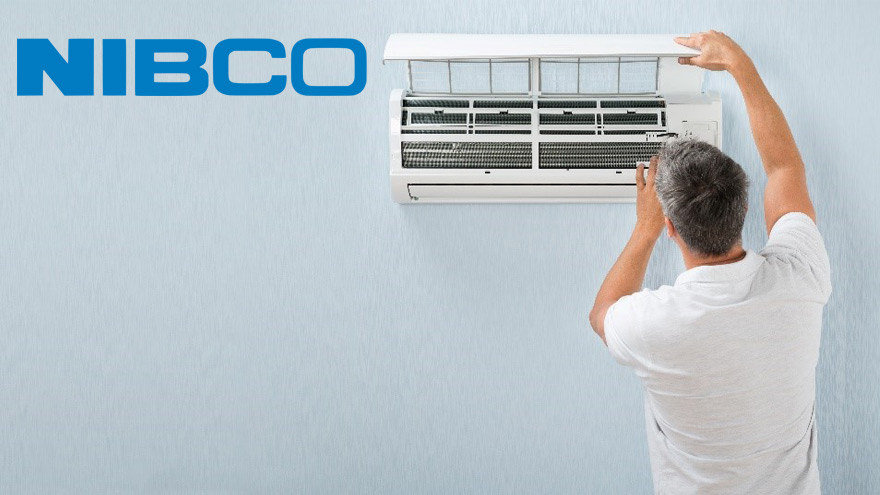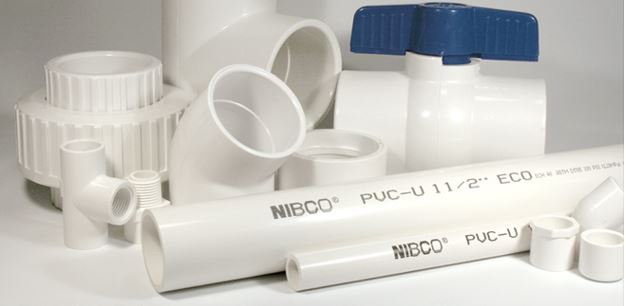Air conditioning installations cool and dry the air in the building, generating large amounts of condensing water. It requires proper drainage in a way that is friendly both to the environment and to all residents of a given facility. The biggest challenges include the problematic location of such a system and the need to ensure its absolute tightness. See how NIBCO products can help you with this!

From the article you will learn:
- what are the methods of draining condensate,
- what are the most common mistakes made when installing air conditioning ,
- where to drain condensate from the air conditioning,
- what pipes to use to drain condensate from the air conditioning.
How to drain condensate from air conditioning?
Draining condensate from an air conditioner can basically be done in two different ways. The first one uses the force of gravity, and the second one involves forcing the flow by pressure. It also happens that both methods are used simultaneously.
Gravitational condensate drainage involves directing the installation downwards, at such an angle that the water flows spontaneously to the desired place. The optimal angle is approximately 1 - 2 degrees relative to the ground plane per 1 linear meter of pipe. This method will only work in the case of the smallest systems in which the distance of the air conditioner from the condensate drain is small - it usually applies to wall-mounted split units.
Large air conditioning installations require the use of a second method of condensate removal, i.e. special condensate pumps. They subject water to pressure that forces it to overcome resistance to flow and gravity. This allows you to pump condensate over longer distances, and also horizontally or even upwards. Thanks to this, they can be discharged to any place - the sewage system, an internal tank or the ground outside.
Check out the NIBCO brand offer
Air conditioning installation and condensate drainage
In order to ensure the effectiveness of the condensate drainage system, it is first necessary to select the appropriate pump. Each model has a different efficiency, which translates into a specific amount of water discharged, as well as the distance and height of its pumping. The appropriate decision can be made thanks to the technical documentation of the installation, which indicates the maximum amount of condensate produced. On this basis, you will easily select a pump with the appropriate capacity and drain pipe diameter .
It is also very important to take into account the IP tightness class, which determines the waterproofness of the control modules. You should also pay attention to the thermal protection, which is activated when the condensate pump overheats. Thanks to this convenience, the life of the device significantly increases.
The most common mistakes made when installing air conditioning
Apart from selecting the wrong pump, other mistakes can also occur when installing air conditioning. The most common ones include the lack of supports or their incorrect spacing, which may result in installation failures and its siphoning. To the so-called The siphon effect occurs when the condensate drain pipe is located lower than the condensate tray. As a result of the pressure difference, the water is completely pulled out of the pipe and the pump starts "dry".
For the same reason, remember to pour water into systems using a pump when you start them for the first time or after a long break. Dry operation causes the device to overheat and ultimately damage it. It is also very important to remove air from the discharge line, because condensate pumps need the water they remove for proper and failure-free operation.
Installing air conditioning also involves the risk of the float getting stuck in the lower or upper position. As a result, the pump does not receive a start signal or runs all the time, even after draining the condensate. This is due to the slightly oblique, and not perfectly horizontal, installation of the pump activation module. Poorly performed installation causes problems such as flooding of rooms or overheating of the pump.
It is worth remembering that problems with the condensate drainage installation may occur not only at the installation stage, but also during the operation of the air conditioner. The reason for this is the drain pipes, which have a relatively small diameter. This means that the impurities settling in them contribute to their clogging. Dirt in the float chamber is also responsible for incorrect operation of the pump. For this reason, the installation should be regularly inspected and serviced. Failure to perform maintenance may result in unpleasant odor, condensate leakage or damage to the pump.
Mistakes made when installing condensate pumps also include the following:
- bending of the condensate discharge pipe,
- no clamps on cable connections,
- no float venting,
- failure to unblock the main drain,
- installing the float in the wrong position,
- incorrect power connection.
Do you have questions about the industry? Join the Świat Instalacji group!
Where to drain condensate from the air conditioner?
Installing an air conditioner in a detached house is much easier because you don't have to worry about your neighbors. In a block of flats, draining condensate from the installation requires the consent of people living on the same floor and directly above and below the air-conditioned premises. Water can be collected in a special tank on the balcony, or if this is not possible, it must be routed to the sewage system. The latter option involves the need to incur higher expenses.
In a detached building, condensate can be drained wherever it suits the owner. They are often directed into the ground or an internal tank. It is less often necessary to pump them into the sewage system.
Check out the NIBCO brand offer
What pipes should be used to drain air conditioning condensate?
In the condensate drainage system, the type of pipes used is of great importance. The best models are those with a very smooth internal surface, which prevents dirt from accumulating. These are the advantages of NIBCO glued pipes. Another advantage of these products concerns a wide range of connectors that allow for almost unlimited possibilities of connecting the pipeline with devices and drain siphons.

The above benefits make NIBCO's rigid glued installation a significant advantage over flexible pipes or standard drain hoses. This solution is especially favorable for gravity systems, which do not require such a strong slope of the installed pipes.
Nibco glued pipes also have the following advantages:
- relatively low purchase cost ,
- high chemical resistance,
- low product weight,
- 100% tightness ,
- relatively low heat conduction parameter,
- safe, quick and simple installation – no need to use complicated tools or electricity,
- high temperature resistance (PVCC)
- the best parameters among plastics regarding reaction to fire, confirmed by Polish and international certificates ( PVCU class - B-s2,d0; PVCC - class B-s1,d0 )
NIBCO pipes and all necessary fittings can be found in our hydraulic wholesaler's offer. Thanks to the high quality of these products, you will ensure the efficiency and safe operation of each air conditioning installation. Check out the Onninen range!